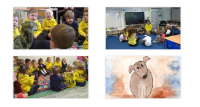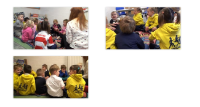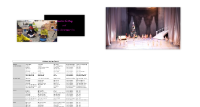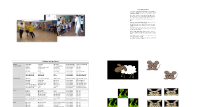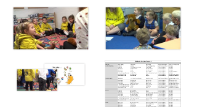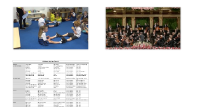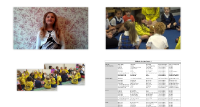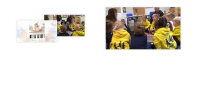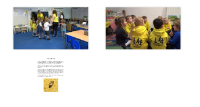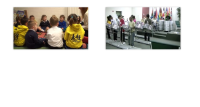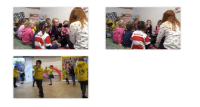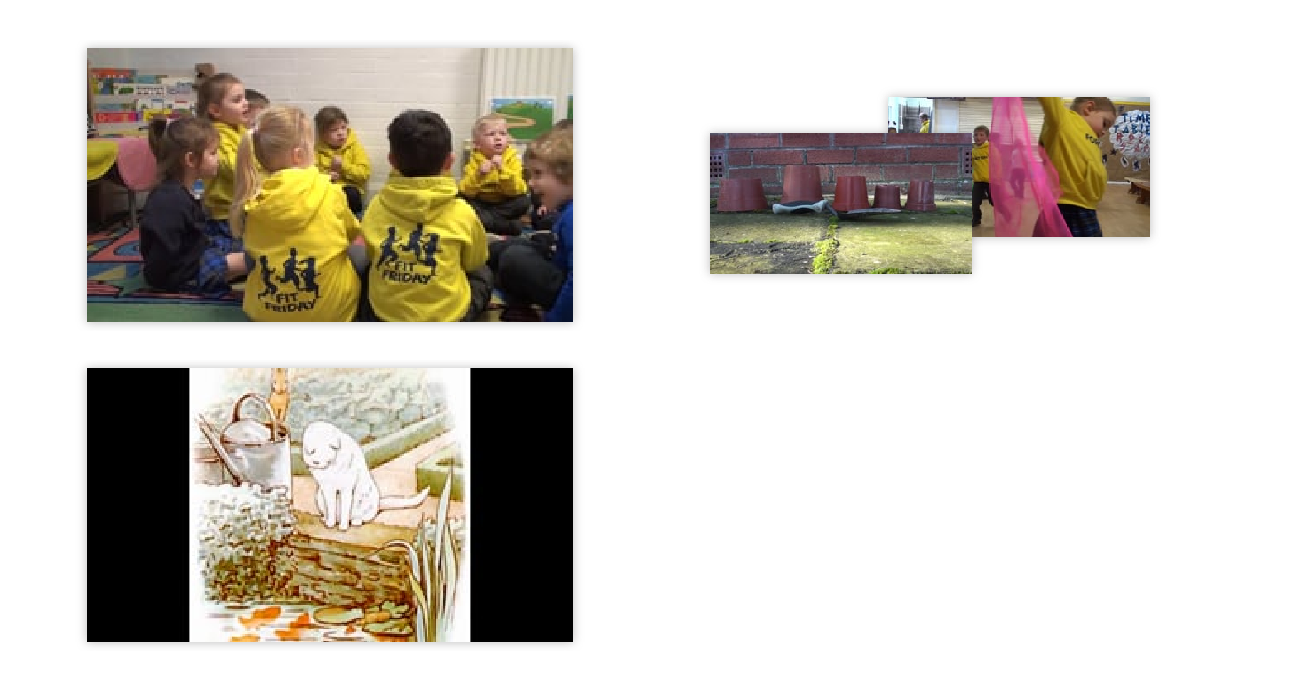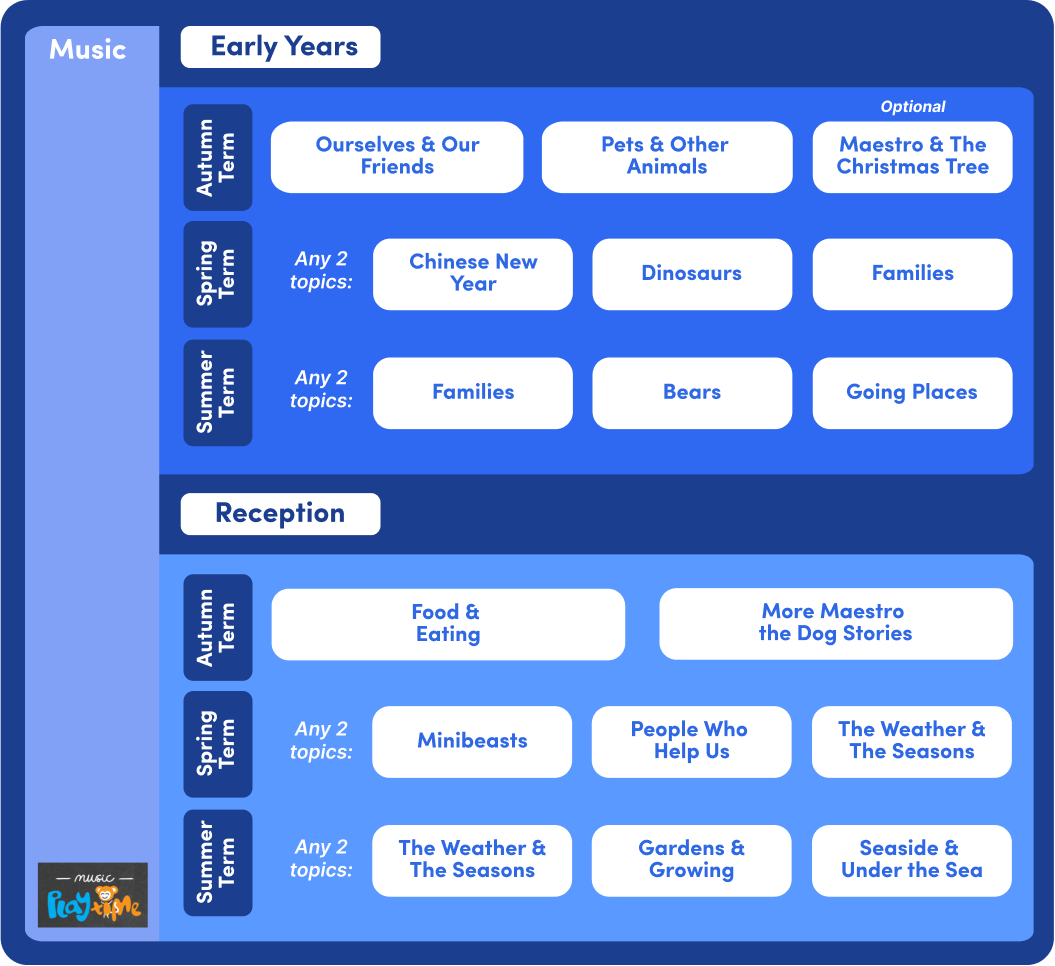Gardens & Growing Level: Early Years

A Spike of Green
A poem by Barbara Baker about growing to introduce this topic.
- When I went out
- The sun was hot
- It shone upon
- My flower pot
- __
- And there I saw
- A spike of green
- That no one else
- Had ever seen
- __
- On other days
- The things I see
- Are mostly old
- Except for me
- __
- But this green spike
- So new and small
- Had never yet
- Been seen at all
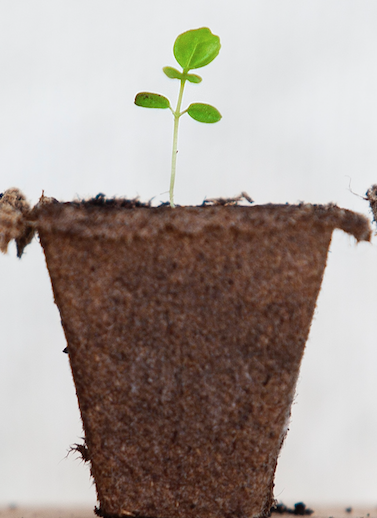
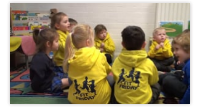
Lavender's Blue
This is a long song compared with some of the Early Years songs but it's a pretty song so we recorded most of it (we omitted one verse!). However, the tune is repetitive and doesn't seem to be too difficult for most children of this age. You may like to do just the first two or three verses.
- Lavender's blue, dilly dilly
- Lavender's green
- When I am king, dilly dilly
- You shall be queen
- __
- Who told you so, dilly dilly?
- Who told you so?
- 'Twas my own heart, dilly dilly
- That told me so
- __
- Roses are red, dilly dilly
- Violets are blue
- If you love me, dilly dilly
- I will love you
- __
- Let the birds sing, dilly dilly
- And the lambs play
- We shall be safe, dilly dilly
- Out of harm's way
- __
- I love to dance, dilly dilly
- I love to sing
- When I am queen, dilly dilly
- You will be king
- __
- Who told you so, dilly dilly
- Who told you so?
- I told myself, dilly dilly
- I told me so
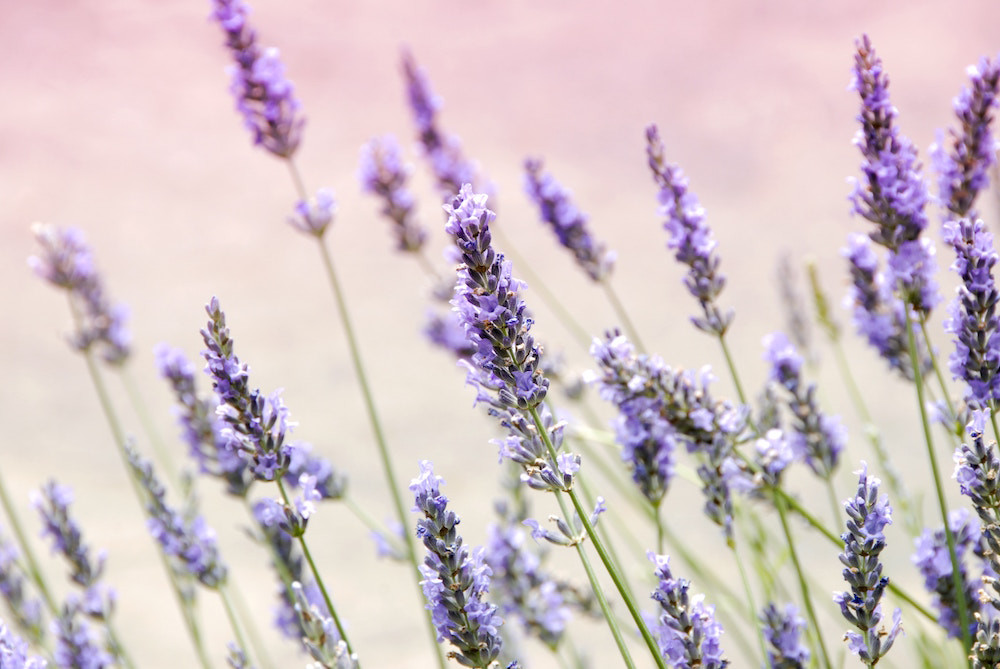
Old MacDonald
A 'perennial' favourite!
- Old MacDonald had a farm
- Ee i ee i o
- And on that farm he had a cow
- Ee i ee i o
- With a moo moo here and a moo moo there
- Here a moo, there a moo, everywhere a moo moo
- Old MacDonald had a farm
- Ee i ee i o
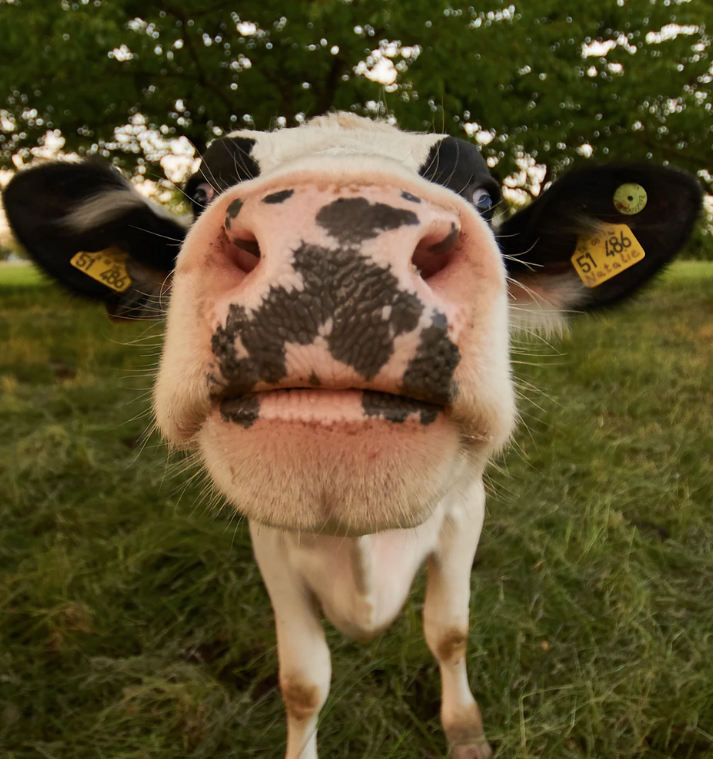


One Potato, Two Potato
One of the best-known, traditional counting rhymes! You can chant it or sing it as you play the game.
- One potato, two potato, three potato, four
- Five potato, six potato, seven potato, more.
Tap Your Head (pulse, rhythm)
Here's an garden chant, with actions. It's a good idea to ask the children to find a big space first, where they can't touch anyone else.
- Tap your head
- And touch your toes
- Curl yourself up
- Like a garden hose
- Sit up straight
- For a wheelbarrow ride
- Then stand like a spade
- With your hands at your side
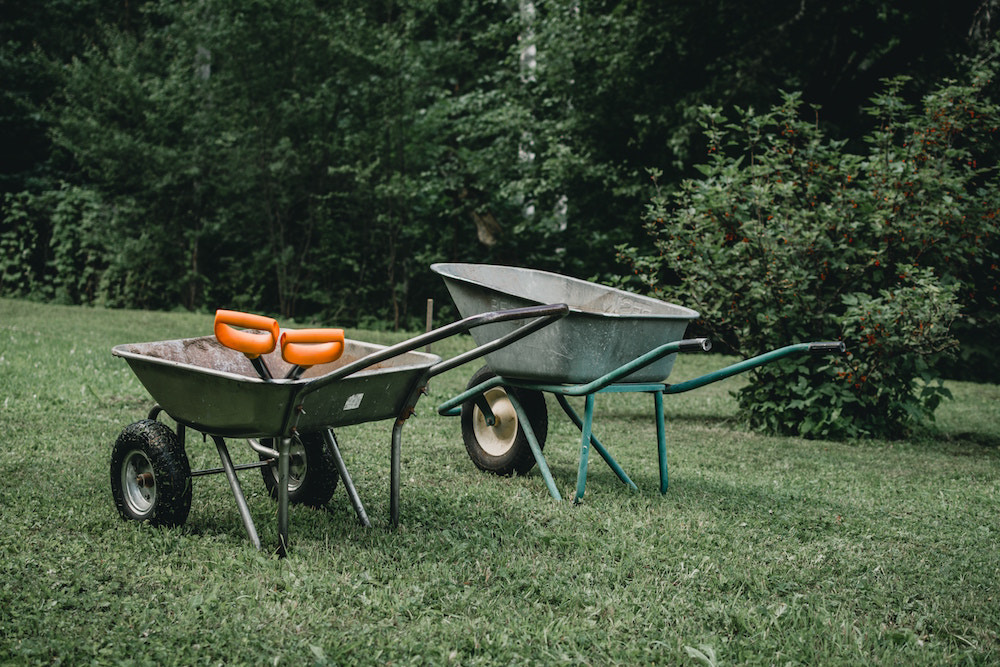
Add an Intro
It's fun to make up an intro using actions and sounds. You could ask the children for ideas, using 'garden' phrases such as:
- Dig the garden (quietly)
- plant the seeds (a bit louder)
- WATCH THEM GROW! (loudly)
They might begin by chanting the words then progress to clapping the rhythms. Next, add percussion instruments, playing the same rhythms as the words.
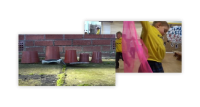
Plant Pot Playing (timbre, pitch, structure)
You need lots of plastic plant pots for the children to use instead of musical instruments so maybe ask parents to donate any spare ones, as well as a few surplus, small gardening implements. It's good to do the Plant Pot activities outdoors if possible!
Lead the children to discover that the plants pots (being various sizes, volumes and thicknesses) make different-pitched sounds when you hit them using beaters or garden canes. With help, the children could put several plant pots in order of higher or lower pitch. By chance, we discovered pots that could, more or less, play a tune!
There's a distinction to be made between making music up, which is original and doesn't deliberately replicate a known tune, and playing 'by ear' a known tune, invented by somebody else. When I ask for music to be made up, I generally find that adults try to play a known tune whereas children prefer to make up their own. Both are useful activities with their own value but making up original music lends itself to greater creativity.
More Garden-Music Discoveries
1/ Hang plant pots upside down by tying a big knot in a length of string and threading it through a hole at the bottom so that the knot is inside the pot and the pots hang down like bells. If the pots are hung in clusters they may be shaken to create an interesting sound.
2/ Bang the plant pots on the table or the floor, either open side down or with base of the pot. The children may come up with different ways of creating a sound such as banging two pots together.
3/ Bang on a trowel with a garden cane.
4/ Shake dried peas or beans in a tin.
Allow time for experimenting first, then create more structured tasks for pairs or small groups of children, such as creating a sequence of different sounds that can be repeated. For a whole class piece of music you could put the children into four groups:
- shake pot clusters
- hit trowels with cane beaters
- bang pots on the floor
- shake peas in a tin
You be the 'conductor', indicating by big hand gestures which group makes their sound next and which groups should stay quiet. It's fun!
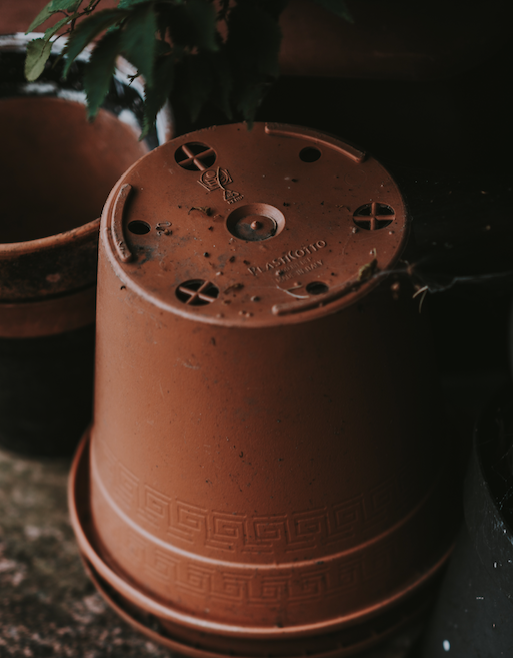

Frosty Gardens (dynamics, pitch)
If it's a cold winter's day, you could take the children outside to look for signs of frost, particularly if the school or nursery has a garden. This music is called Frost, by the composer, Glazunov. Ask the children to imagine what might be happening in the music on this freezing day - I can imagine children whizzing down home-made slides on the ice (we used to get into trouble, as children, for making slides in the middle of our lane!).
Frost Dancing (dynamics, pitch)
Children enjoy using dance scarves and having a floaty scarf can be a great help to children to whom dancing freely doesn't seem to come naturally. Ask the children to show with their scarf how the music gets louder and quieter, and higher and lower.
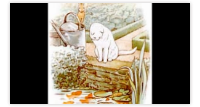
Peter Rabbit (PSHE link)
Who's up for a bit of nostalgia? There are lots of Peter Rabbit animations but somehow I think that this simple, old-fashioned reading encapsulates the era in which the Tale of Peter Rabbit was written in 1902 by Beatrix Potter. Because it's not animated, the children have to listen more carefully. The story depicts a traditional vegetable garden of the sort that many children will not have seen unless they live in a rural area or near an allotment.
What to do next
Rabbit Dance
The children could do a bunny-hopping Peter Rabbit dance to the music at the beginning. Here's a short clip of the music:
Sow Seeds like Mr MacGregor!
This is a fascinating thing for children to do. All you need is moist cotton wool and some bean seeds, which will grow shoots easily so that the children can see both the roots and the shoots.


A Spike of Green
A poem by Barbara Baker about growing to introduce this topic.
- When I went out
- The sun was hot
- It shone upon
- My flower pot
- __
- And there I saw
- A spike of green
- That no one else
- Had ever seen
- __
- On other days
- The things I see
- Are mostly old
- Except for me
- __
- But this green spike
- So new and small
- Had never yet
- Been seen at all


Lavender's Blue
This is a long song compared with some of the Early Years songs but it's a pretty song so we recorded most of it (we omitted one verse!). However, the tune is repetitive and doesn't seem to be too difficult for most children of this age. You may like to do just the first two or three verses.
- Lavender's blue, dilly dilly
- Lavender's green
- When I am king, dilly dilly
- You shall be queen
- __
- Who told you so, dilly dilly?
- Who told you so?
- 'Twas my own heart, dilly dilly
- That told me so
- __
- Roses are red, dilly dilly
- Violets are blue
- If you love me, dilly dilly
- I will love you
- __
- Let the birds sing, dilly dilly
- And the lambs play
- We shall be safe, dilly dilly
- Out of harm's way
- __
- I love to dance, dilly dilly
- I love to sing
- When I am queen, dilly dilly
- You will be king
- __
- Who told you so, dilly dilly
- Who told you so?
- I told myself, dilly dilly
- I told me so

Old MacDonald
A 'perennial' favourite!
- Old MacDonald had a farm
- Ee i ee i o
- And on that farm he had a cow
- Ee i ee i o
- With a moo moo here and a moo moo there
- Here a moo, there a moo, everywhere a moo moo
- Old MacDonald had a farm
- Ee i ee i o



One Potato, Two Potato
One of the best-known, traditional counting rhymes! You can chant it or sing it as you play the game.
- One potato, two potato, three potato, four
- Five potato, six potato, seven potato, more.
Tap Your Head (pulse, rhythm)
Here's an garden chant, with actions. It's a good idea to ask the children to find a big space first, where they can't touch anyone else.
- Tap your head
- And touch your toes
- Curl yourself up
- Like a garden hose
- Sit up straight
- For a wheelbarrow ride
- Then stand like a spade
- With your hands at your side

Add an Intro
It's fun to make up an intro using actions and sounds. You could ask the children for ideas, using 'garden' phrases such as:
- Dig the garden (quietly)
- plant the seeds (a bit louder)
- WATCH THEM GROW! (loudly)
They might begin by chanting the words then progress to clapping the rhythms. Next, add percussion instruments, playing the same rhythms as the words.

Plant Pot Playing (timbre, pitch, structure)
You need lots of plastic plant pots for the children to use instead of musical instruments so maybe ask parents to donate any spare ones, as well as a few surplus, small gardening implements. It's good to do the Plant Pot activities outdoors if possible!
Lead the children to discover that the plants pots (being various sizes, volumes and thicknesses) make different-pitched sounds when you hit them using beaters or garden canes. With help, the children could put several plant pots in order of higher or lower pitch. By chance, we discovered pots that could, more or less, play a tune!
There's a distinction to be made between making music up, which is original and doesn't deliberately replicate a known tune, and playing 'by ear' a known tune, invented by somebody else. When I ask for music to be made up, I generally find that adults try to play a known tune whereas children prefer to make up their own. Both are useful activities with their own value but making up original music lends itself to greater creativity.
More Garden-Music Discoveries
1/ Hang plant pots upside down by tying a big knot in a length of string and threading it through a hole at the bottom so that the knot is inside the pot and the pots hang down like bells. If the pots are hung in clusters they may be shaken to create an interesting sound.
2/ Bang the plant pots on the table or the floor, either open side down or with base of the pot. The children may come up with different ways of creating a sound such as banging two pots together.
3/ Bang on a trowel with a garden cane.
4/ Shake dried peas or beans in a tin.
Allow time for experimenting first, then create more structured tasks for pairs or small groups of children, such as creating a sequence of different sounds that can be repeated. For a whole class piece of music you could put the children into four groups:
- shake pot clusters
- hit trowels with cane beaters
- bang pots on the floor
- shake peas in a tin
You be the 'conductor', indicating by big hand gestures which group makes their sound next and which groups should stay quiet. It's fun!


Frosty Gardens (dynamics, pitch)
If it's a cold winter's day, you could take the children outside to look for signs of frost, particularly if the school or nursery has a garden. This music is called Frost, by the composer, Glazunov. Ask the children to imagine what might be happening in the music on this freezing day - I can imagine children whizzing down home-made slides on the ice (we used to get into trouble, as children, for making slides in the middle of our lane!).
Frost Dancing (dynamics, pitch)
Children enjoy using dance scarves and having a floaty scarf can be a great help to children to whom dancing freely doesn't seem to come naturally. Ask the children to show with their scarf how the music gets louder and quieter, and higher and lower.

Peter Rabbit (PSHE link)
Who's up for a bit of nostalgia? There are lots of Peter Rabbit animations but somehow I think that this simple, old-fashioned reading encapsulates the era in which the Tale of Peter Rabbit was written in 1902 by Beatrix Potter. Because it's not animated, the children have to listen more carefully. The story depicts a traditional vegetable garden of the sort that many children will not have seen unless they live in a rural area or near an allotment.
What to do next
Rabbit Dance
The children could do a bunny-hopping Peter Rabbit dance to the music at the beginning. Here's a short clip of the music:
Sow Seeds like Mr MacGregor!
This is a fascinating thing for children to do. All you need is moist cotton wool and some bean seeds, which will grow shoots easily so that the children can see both the roots and the shoots.

